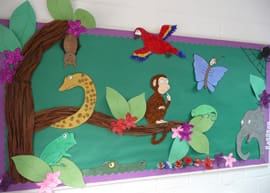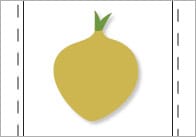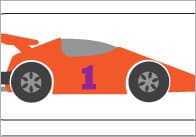How to Improve your Classroom Display

This is part of a series of posts taken from Dr David Smawfield’s catalogue of resources created to help new teachers, or teachers in training, feel comfortable in their new classes and effectively control their new pupils.
Following on from Dr Smawfield’s previous blog about the advantages of classroom displays, here are a few ideas to help you keep your displays looking fresh and interesting.
– Change displays regularly, to maintain interest and freshness.
– Displays need maintenance. Keep up running repairs if things come loose, or damaged, or untidy.
– Encourage students to bring in interesting pictures and objects to add to displays.
– If the display is aimed at the class, think about the eye level of students, including when they are sat at their desks. This is not the same as adults. This should influence the height of displays.
– Give displays titles. Include explanations and other signposts (such as pointers) if these are helpful.
– When you visit other schools and classrooms, look out for good display ideas.
– A good way of making displays when wall space is limited is to hang display material from a string line, attached with pegs or clips.
How to make your classroom displays more exciting
– Use strong, contrasting, colours for display. A “colour wheel” is a useful reference tool for designing colour schemes.
– It can be used in several ways. It helps to identify “opposite” colours: those that will give a good contrast. “Yellow”, for example, is the opposite of “Purple”. If the predominant colour in a display were “Orange”, then “Blue” would make a good contrasting colour for the background.
– If it is wished to create “harmonies” – colours that seem to go together – choose any two or three neighbouring colours on the colour wheel.
– An effective colour scheme, which provides both “harmony” and “contrast”, based on three colours, is the use of any two neighbouring colours with any one contrasting colour: for example – blue, purple and yellow.
– Dark backgrounds often work best, especially if the material being displayed comprises drawings, text, or pictures on white paper.
– A cheaper (and quicker) way of creating mounting effects is to draw borders with pens.
– Another excellent and cheap way of achieving border effects is to stick narrow strips of contrasting coloured paper around the edges of pictures. If reels of crepe paper are available (i.e. the type used as “streamers” for parties and Christmas decoration), these can also be used to create powerful border and framing effects.
We also have a variety of classroom displays here at Early Learning HQ, if you have any other ideas for banners displays you would like us to make then please email us atabby@earlylearninghq.org.uk.
Dr Smawfield is a senior international development consultant based in the UK and has a strong background in teacher education. He has worked in countries around the world, including Bangladesh, Malawi, Romania and Vietnam and is especially interested in active learning and low-cost teaching aids. You can find out more about his work on his website.
Popular Teaching Resources
Stay Up To Date
Sign up for our newsletter and we’ll let you know when we create new early years resources.





